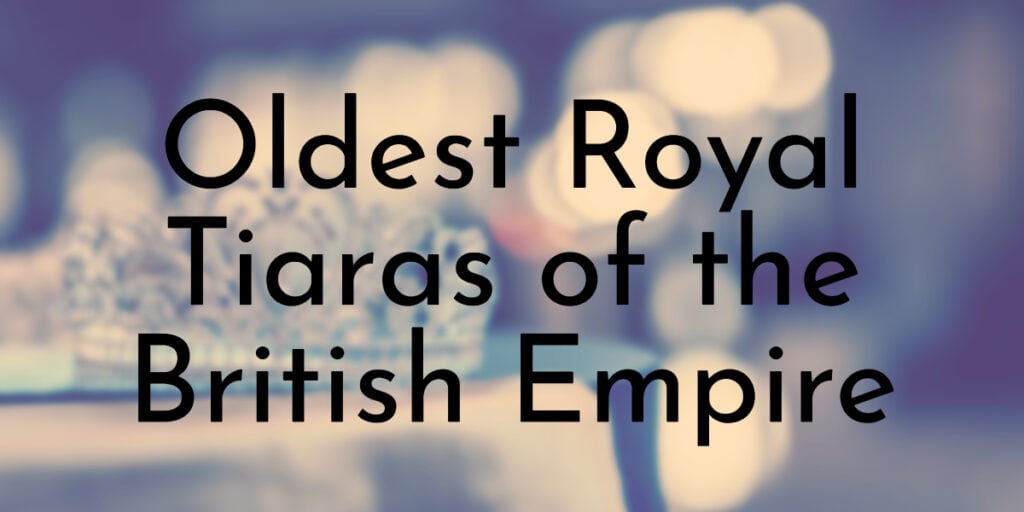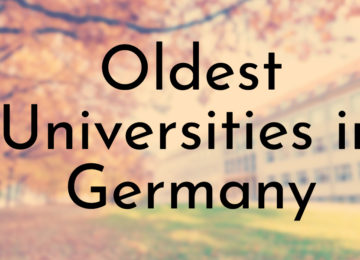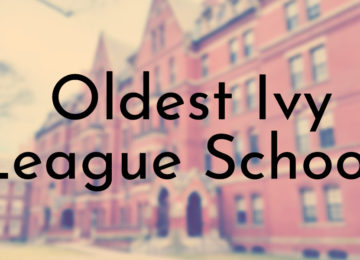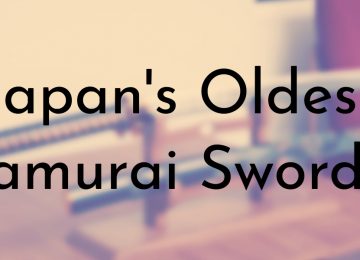The British monarchy has a long history, which began with the unification of the island by the Anglo-Saxons. The House of Windsor is one of several royal houses that rule individual kingdoms.
Because of this, there are many different types of tiaras in the British Empire. Some tiaras mark moments in the life of a sovereign, while others commemorate important events.
Read on as you will find 10 of the oldest tiaras in the British monarchy and information about how they were made and their use.
10. Queen Mary’s Fringe Tiara
Year Created: 1919
Also Known As: Unspecified
First Owner: Queen Mary
Assembled and Designed By: E. Wolff & Co. and Garrard & Co.
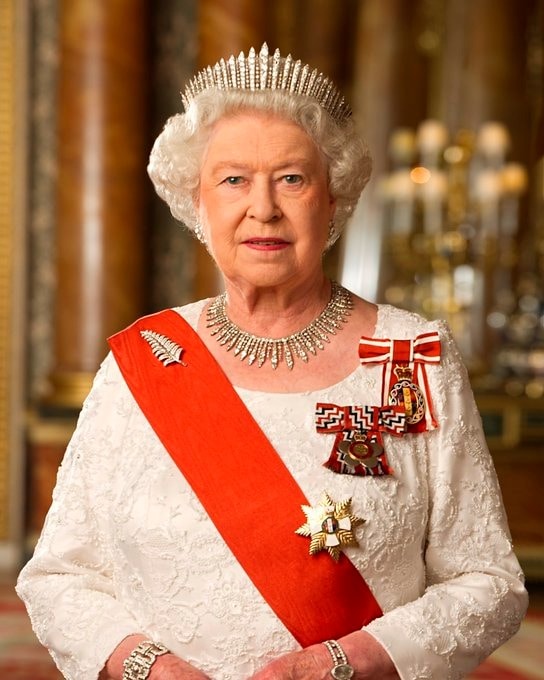
The diamonds that were once set in Queen Mary’s bridal tiara were assembled and designed by E. Wolff & Co and Garrard & Co created the piece in 1919.
Queen Adelaide’s tiara, which Queen Mary previously owned, was not perfectly graded as she would have liked and it was also quite enormous, but the fringe tiara design was highly popular among the royals.
This “retooled” design was made at the request of Queen Mary, who desired a more modern version with a more even, streamlined appearance. Photographs and photos frequently mix up these two tiaras.
In the end, the Queen Mary Fringe Tiara was given to Queen Elizabeth, who then loaned it to Princess Elizabeth in 1947 to serve as her “something borrowed” wedding tiara (Princess Anne also wore it for this purpose).
Did You Know?
Queen Elizabeth II inherited it in 2002 and had been spotted wearing it in recent pictures before her passing.
9. Lover’s Knot Tiara
Year Created: 1913
Also Known As: Unspecified
First Owner: Queen Mary
Assembled and Designed By: E. Wolff & Co. and Garrard & Co.
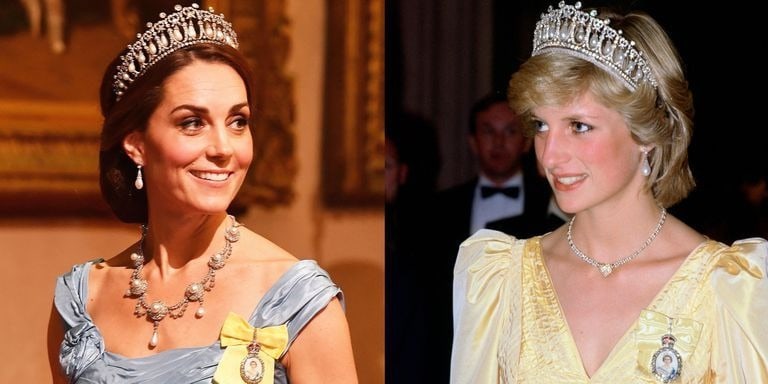
The design was developed from a style admired by Queen Mary’s grandmother and created by E. Wolff & Co for Garrard & Co in 1913.
The modified version’s patterns and swags clearly show how the 1818 tiara was inspired by the extremely Gothic late Georgian design ethos.
The Lover’s Knot Tiara originally had a lot of pearls on it that were recycled from various historical sources. As a result of the removal of many of those pearls (during several renovation projects), the design is now more streamlined than it was initially.
Did You Know?
Diana, Princess of Wales, frequently wore the tiara when it was given to Queen Elizabeth II in 1953 following the passing of her grandmother.
8. Delhi Durbar Tiara
Year Created: 1911
Also Known As: Boucheron Tiara
First Owner: Queen Mary
Assembled and Designed By: Garrard & Co.
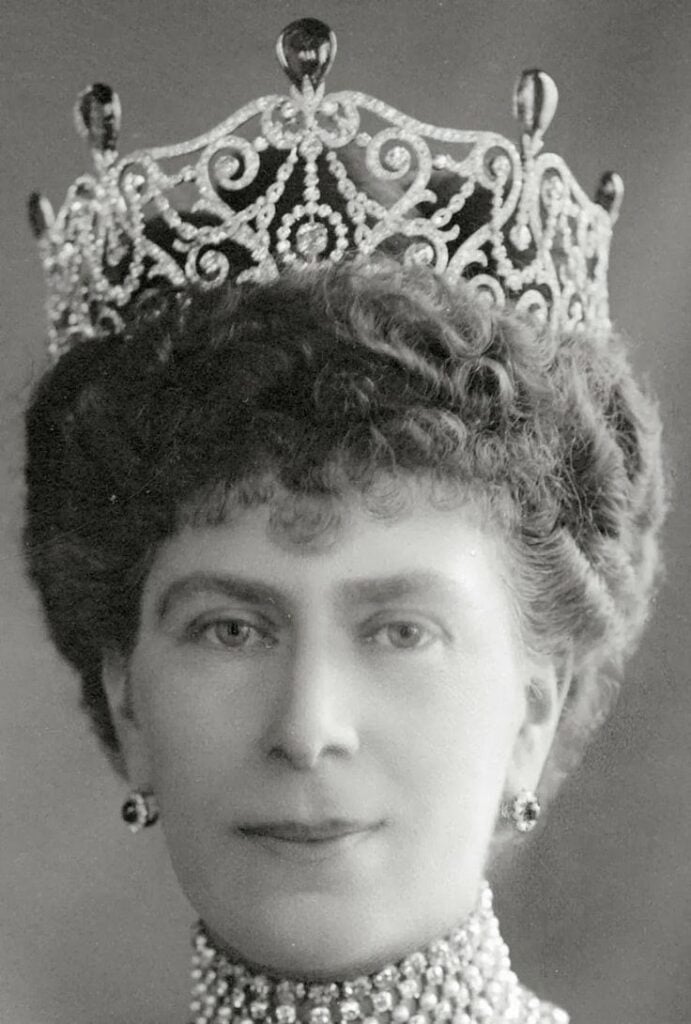
Garrard & Co. created the Delhi Durbar Tiara as part of a beautiful parure to be worn to the 1911 “Delhi Durbar.”
The original design of the tiara included emeralds taken from a necklace that was once owned by the Duchess of Cambridge, as well as diamonds from a Boucheron Tiara and extra stones sent by De Beers while Mary was the Duchess of York.
Garrard altered the piece later by removing the emeralds and adding (then later removing) the Cullinan III and IV diamonds. For the 1947 South African Tour, Queen Mary lent the tiara to Queen Elizabeth (Queen Consort of King George VI).
Did You Know?
The tiara was worn by Queen Elizabeth until her passing. It was eventually acquired by Queen Elizabeth II, but just now, the Duchess of Cornwall is borrowing it.
7. Strathmore Tiara
Year Created: c. 1900
Also Known As: Strathmore “Rose” Tiara
First Owner: Queen Mary
Assembled and Designed By: Unspecified
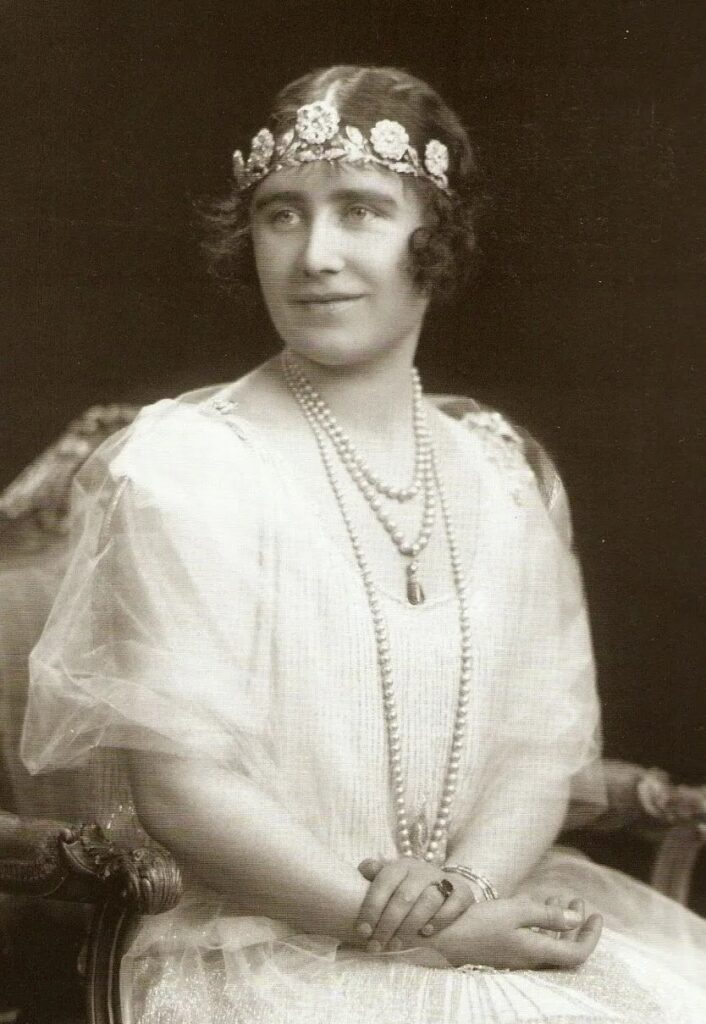
The Strathmore “Rose” Tiara was given to her by her father, The Earl of Strathmore, as a wedding present in 1923. Despite being from the late 1900s, it was ideal for flapper fashion in the 1920s.
In the Language of Flowers, roses stand for all facets of love, making them a suitable choice for a wedding gift.
Two frames were included with this adaptable bandeau/tiara combo to make the changeover easier. The five wild rose motifs may also be removed to make a spray of brooches, and sapphires were included to replace the missing blossoms.
Did You Know?
It was frequently worn by Queen Elizabeth, the Queen Mother, but no other royal princes have been seen with it in many years.
6. Duchess of Teck’s Tiara
Year Created: 1882
Also Known As: Unspecified
First Owner: Princess Mary
Assembled and Designed By: Unspecified
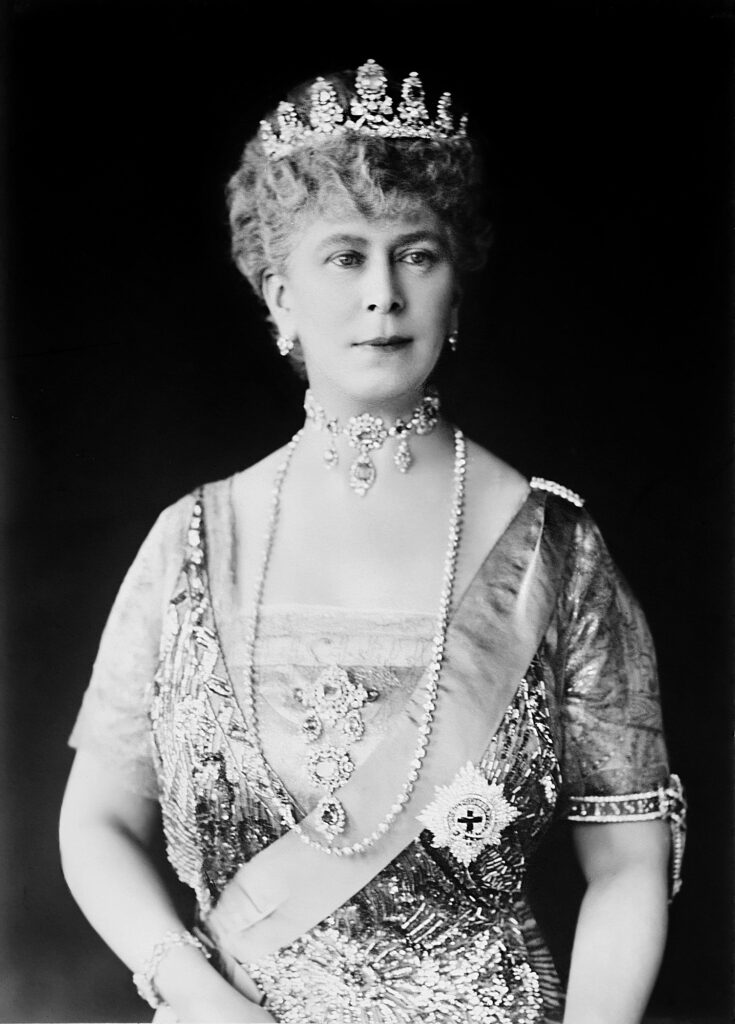
Initially arranged as a headband, the crescent, floral, and foliate elements eventually came together as a tiara in 1882.
This relatively simple tiara had its beginnings as a series of inherited elements that were given to Princess Mary Adelaide of Cambridge (aka Duchess of Teck by marriage) in 1857 upon the death of her beloved aunt, Princess Mary, Duchess of Gloucester and Edinburgh (daughter of King George III).
Her oldest son, Prince Adolphus of Teck, and daughter-in-law Princess Margaret, Duchess of Teck, received the tiara after her passing.
Did You Know?
Queen Elizabeth acquired the tiara in 1937, and then Queen Elizabeth II acquired it in 2002.
5. The Vladimir Tiara
Year Created: 1874
Also Known As: Unspecified
First Owner: Russian Grand Duchess Maria Pavlovna
Assembled and Designed By: Bolin
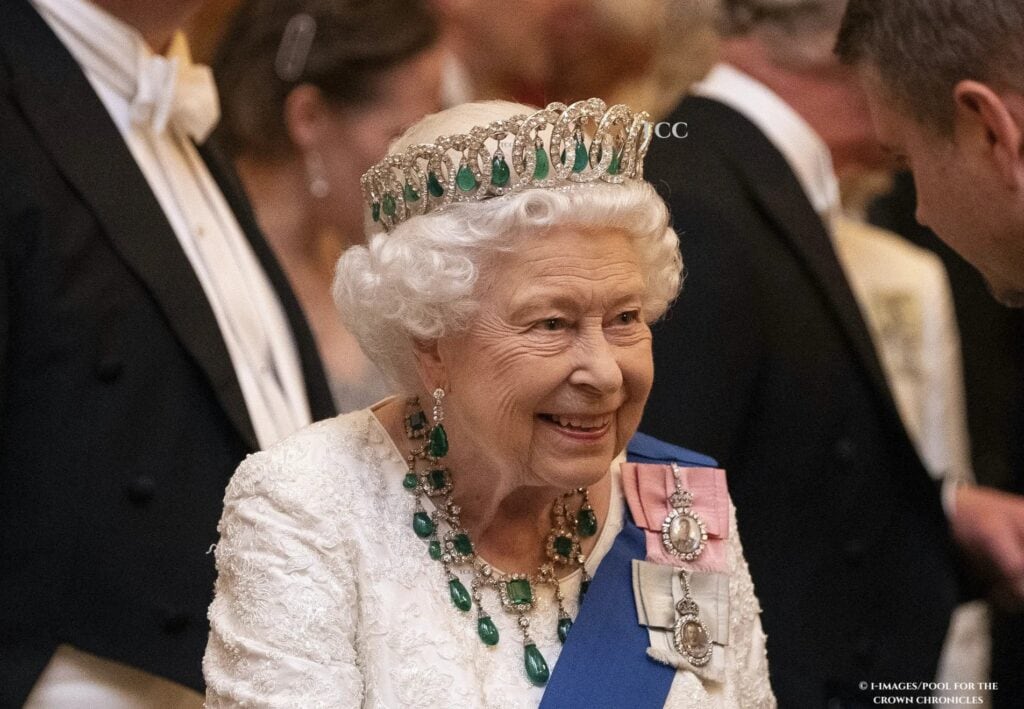
The Vladimir Tiara is a jeweled headpiece that was made for the coronation of Empress Alexandra Feodorovna of Russia in 1896. It was designed by the jeweler named Bolin and is made of platinum and diamonds.
The tiara was named after the city of Vladimir, where the coronation took place.
The tiara was eventually smuggled out of Russia during the Revolution, it was purchased by Queen Mary (along with other high value jewelry).
When Queen Mary passed away, Queen Elizabeth II inherited the tiara and it is believed to be the most favorite of all the tiaras worn by the late queen.
4. Queen Victoria’s Small Diamond Crown
Year Created: 1870
Also Known As: Unspecified
First Owner: Queen Victoria
Assembled and Designed By: Garrard & Co.
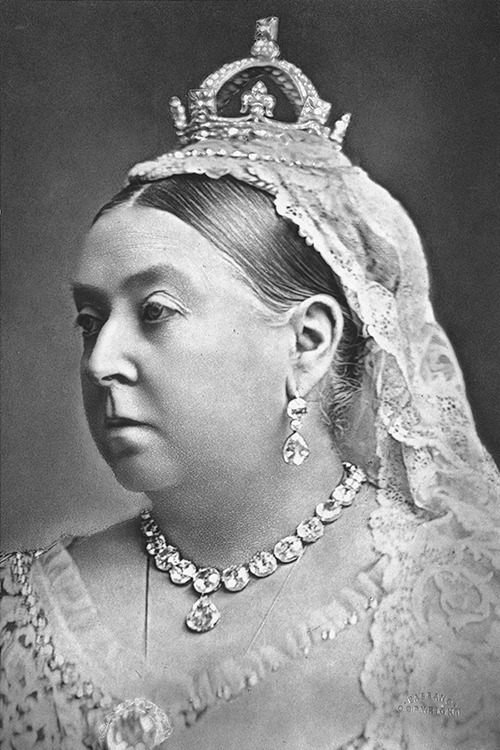
Queen Victoria desired a smaller crown to put on top of her widow’s hat following the passing of her beloved Prince Albert.
A band of brilliant, rose, and mixed-cut diamonds with four each of pasty and fleur-de-lis crosses set in diamonds was created in 1870 by Garrard & Co.
The diamonds undoubtedly originated from a long fringe necklace and most likely a big chaine de corsage in the royal inventory. Removable arches were crowned with a monde pave-set with brilliant and rose cut diamonds and topped by a cross paty centering a larger brilliant.
Did You Know?
Queen Victoria loved this crown because it so perfectly captured her reign. It likewise became a favorite of Queen Alexandra, and when Edward VII passed away, she found it difficult to give it to Queen Mary. Despite the fact that it was never worn during a coronation, King George VI formally included it in the Regalia in the Tower.
3. The Oriental Circlet
Year Created: 1853
Also Known As: Garrard Tiara
First Owner: Queen Charlotte
Assembled and Designed By: Garrard & Co.
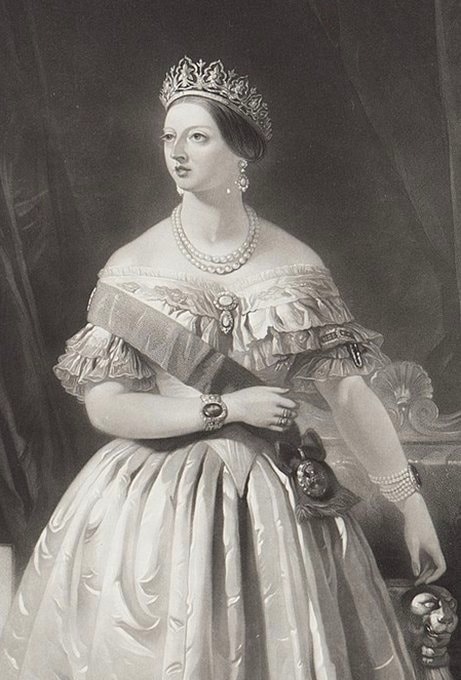
This Garrard tiara, made of diamonds and opals, was created in 1853, most likely with the help of Prince Albert, who was heavily involved with all of the Queen’s jewels. The Queen and Garrard’s had to supply diamonds in order to replace some of the stones that were originally part of Queen Charlotte’s contentious Hanover collection.
In 1902, Queen Alexandra changed the opals for rubies while lowering the number of arches from seventeen (some of which were purposefully detachable) to eleven. The tiara has remained in this arrangement ever since.
A picture of Queen Elizabeth (Queen Mother) taken by famed photographer Cecil Beaton is among the circlet’s most stunning images.
Did You Know?
After the Queen Mother passed away in 2002, Queen Elizabeth II took over the ownership of this tiara and it became one of her favorites.
2. Queen Adelaide’s Fringe Tiara
Year Created: 1851
Also Known As: Hanover Tiara
First Owner: Queen Victoria
Assembled and Designed By: Royal Goldsmiths Rundell
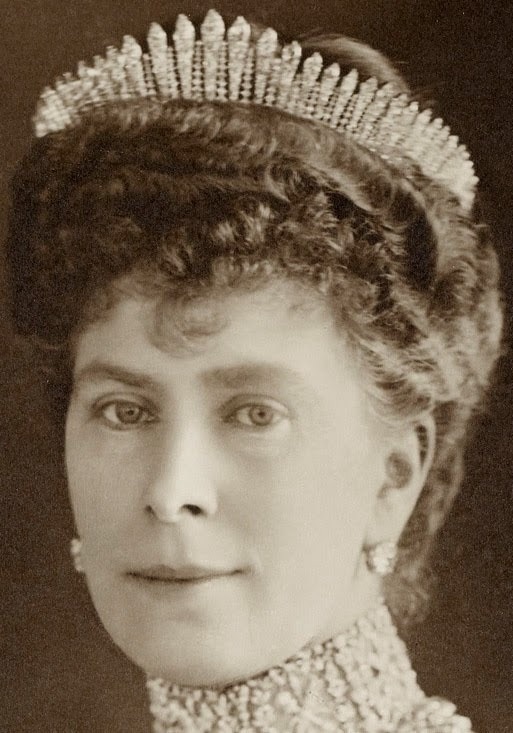
Rundell fashioned 133 diamond-set pieces into a fringe tiara using diamonds taken from the jewelry of King George III and Queen Charlotte. The fringe tiara, also known as the Hanover Tiara and inherited from Queen Adelaide, was a favorite of Queen Victoria.
It is known that she wore it to the opening of the Great Exhibition and other events, since it is shown on her in the well-known 1851 Winterhalter painting, “Queen Victoria with the Duke of Wellington.”
dShe chose to wear it as a necklace instead of a larger coronet as her official headgear of state. While Queen Mary made the fringe back into a tiara but didn’t particularly like it, Queen Alexandra is seen having it dangling around her waist as a girdle.
Did You Know?
In 1919, the creation of a new fringe tiara took its place, and in 1936, when Queen Elizabeth (Queen Consort to King George VI) received Queen Adelaide’s Fringe Tiara, it was once more changed into a necklace.
1. Diamond Diadem
Year Created: 1820
Also Known As: George IV’s Circlet
First Owner: Queen Adelaide
Assembled and Designed By: Royal Goldsmiths Rundell, Bridge & Rundell
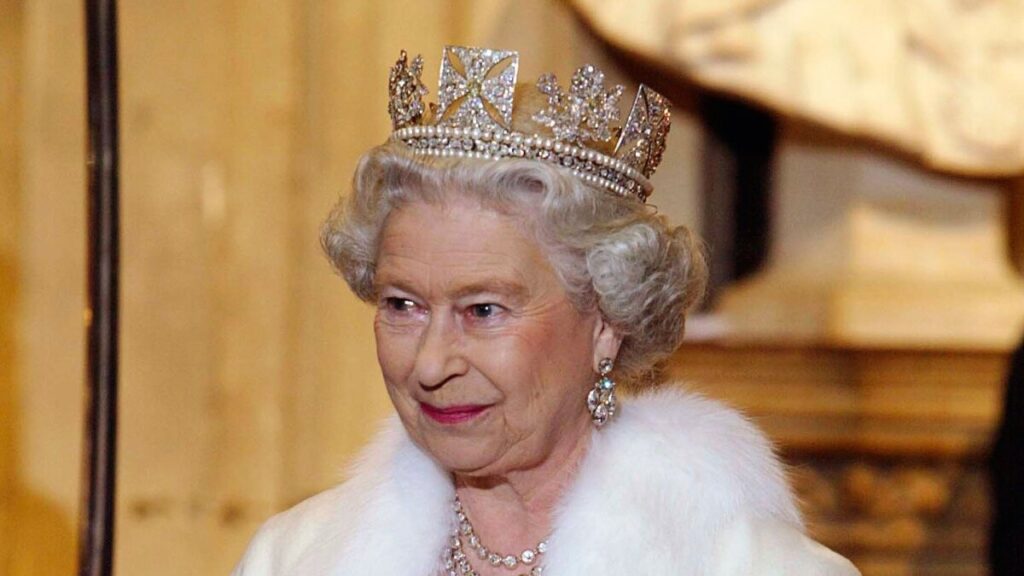
The Diamond Diadem, produced in 1820, was for King George IV’s coronation in 1821, and is considered the oldest surviving tiara of the British Empire.
At his coronation, George wanted a lavish new crown, but he was forced to settle for a temporary state crown that was encrusted with diamonds and paid for by the crown.
Some of the crown’s design components that the government had previously rejected found a new home in a diamond circlet created for the same event.
The King’s effort to divorce his wife by introducing the “Bill of Pains and Penalties” into the House of Lords resulted in a protracted postponement of the coronation, which was largely to blame. She ultimately proved to be more well-liked than the King, and the bill was dropped.
The Royal Goldsmiths kept working on the Regalia gems and plate throughout this time, collecting a sizable rental fee as a result of the delay, while Coronation plans continued to go forward and expand in scope.
Did You Know?
The Diamond Diadem is immortalized with the image of Queen Elizabeth II on stamps, coins, and folding money. She donned it at all State Openings and other significant events.


